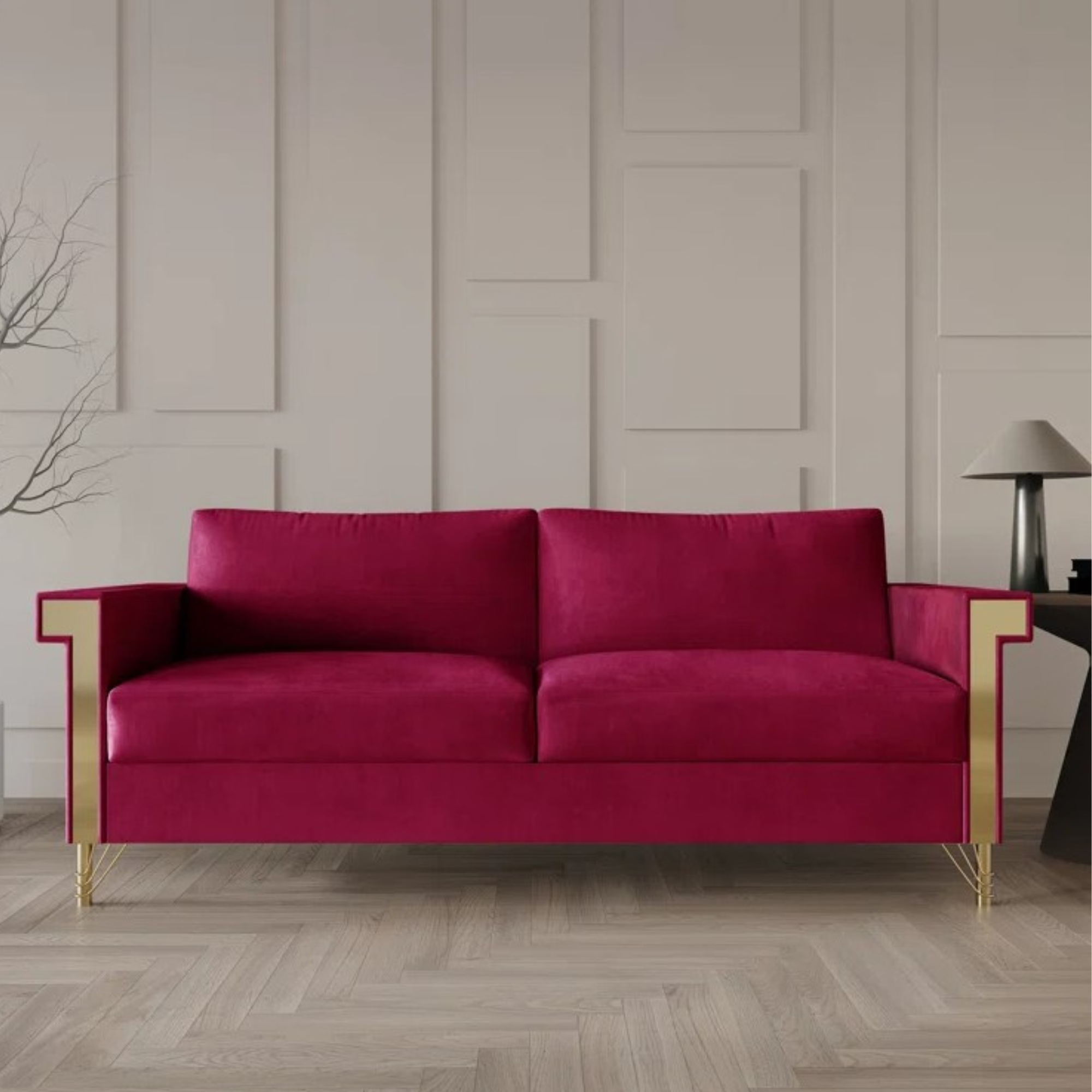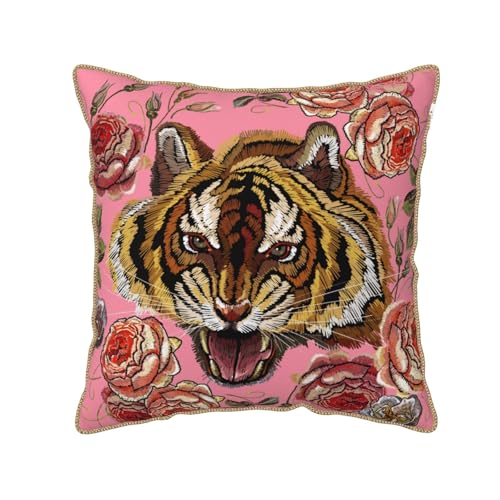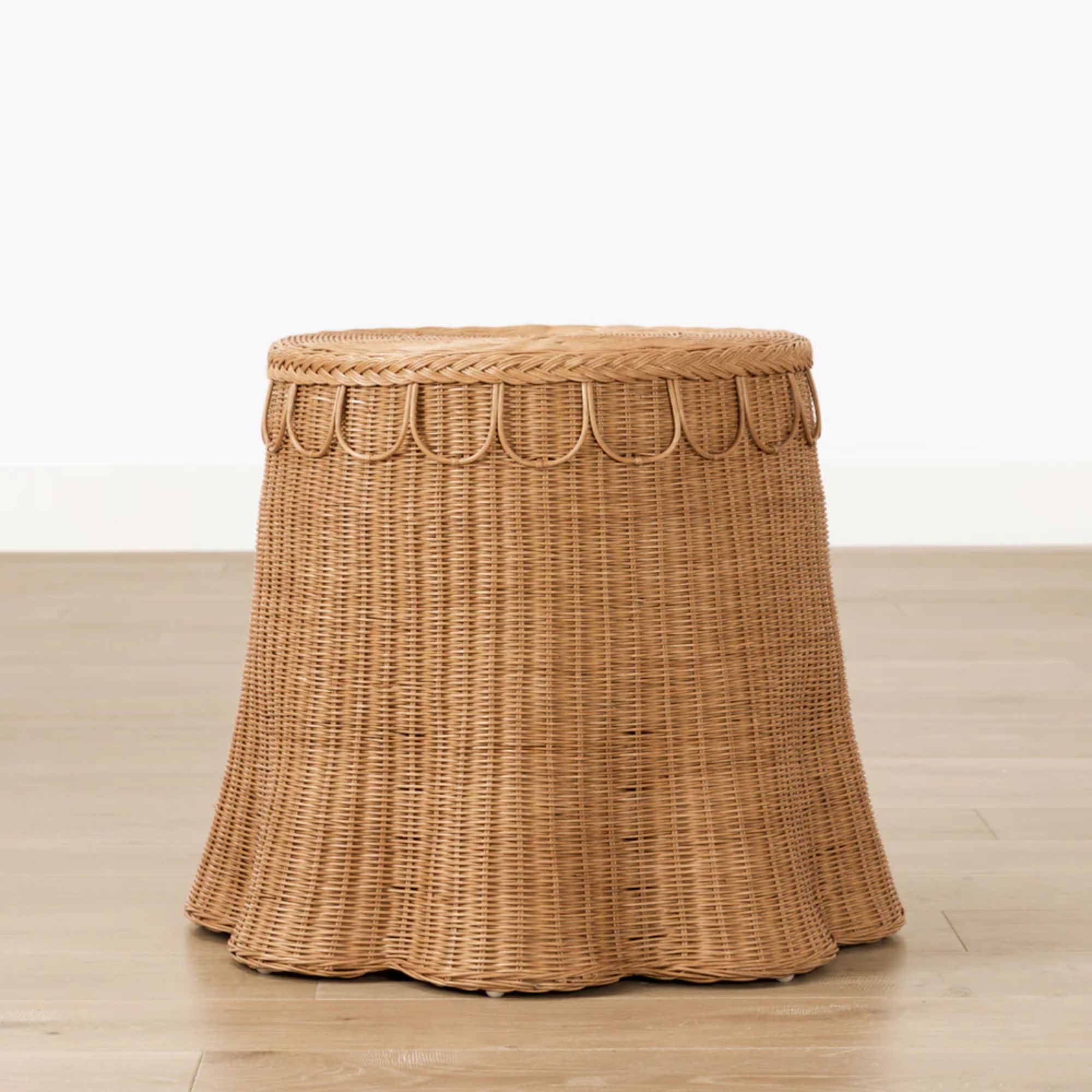
When designing a living room, you'd be forgiven for believing that paint colors and your chosen furnishings make the most significant difference in its overall aesthetic. However, while these elements are by all means powerful, the layout of such pieces is equally as crucial, as Dakota Fanning reminds us.
In her living room, the actress has mastered the art of conversational seating method, in which sofas (and/or accent chairs) are strategically arranged to provoke conversation.
In recent months, I've seen countless celebrities following the same living room seating technique, including Anne Hathaway, Jennifer Aniston, and George and Amal Clooney, and every time, I'm impressed by how welcoming it makes a room feel. Dakota Fanning’s pink and blue living room is no exception.
Shop the look

This deep pink luxurious upholstery sofa, is an harmonious blend of opulence and comfort, inspired by Dakota's.

With its trending animal motif, this tiger pillow is an instant talking point against a pink sofa. It's as comforting as it is stylish.

If you'd struggle to fit the coffee table into your living space, this small rattan piece (like Dakota's) is the perfect alternative. It will bring a hint of whimsy to any seating arrangement.
The aesthetic appeal of this conversational seating method is no secret, but as real estate experts explain, there are even more benefits to following Dakota's example.
'The first thing I notice when I step into any living room isn’t the art on the walls or the size of the TV – it’s how easily people can lean in and talk to one another. After years of guiding Austin families, I’ve learned that the most memorable spaces aren’t the flashiest; they’re the ones that invite genuine connection with a single glance,' comments Eric Bramlett, the owner of Bramlett Real Estate.
'This concept is known as conversational seating, and it works because it prioritizes people. Picture four chairs and a couch curving around a coffee table. Everyone can see every smile, read every expression, and join the chat without leaning or stretching. Families love this because eye contact is easy and stories flow naturally. Friends feel it too. The shape removes invisible walls and turns even a short visit into a real connection.'
Alongside feeling welcoming and encouraging all-important conversation, the method makes use of awkward nooks and corners. This makes it a powerful option if you're working with a small living room, in homes more compact than Dakota's.
'The layout rescues wasted corners and odd angles that often sit empty in a television-centered room. By rotating furniture away from a single screen, you unlock the full potential of the floor plan,' Eric says.
'A small bungalow suddenly feels roomy when chairs point toward each other rather than the wall. In a larger home, you can even build two circles, letting one group play a card game while another shares dessert without shouting across the cushions.'
No matter the size of your living room, it's somewhat possible to follow Dakota's example. Trust me, your guests will notice.







